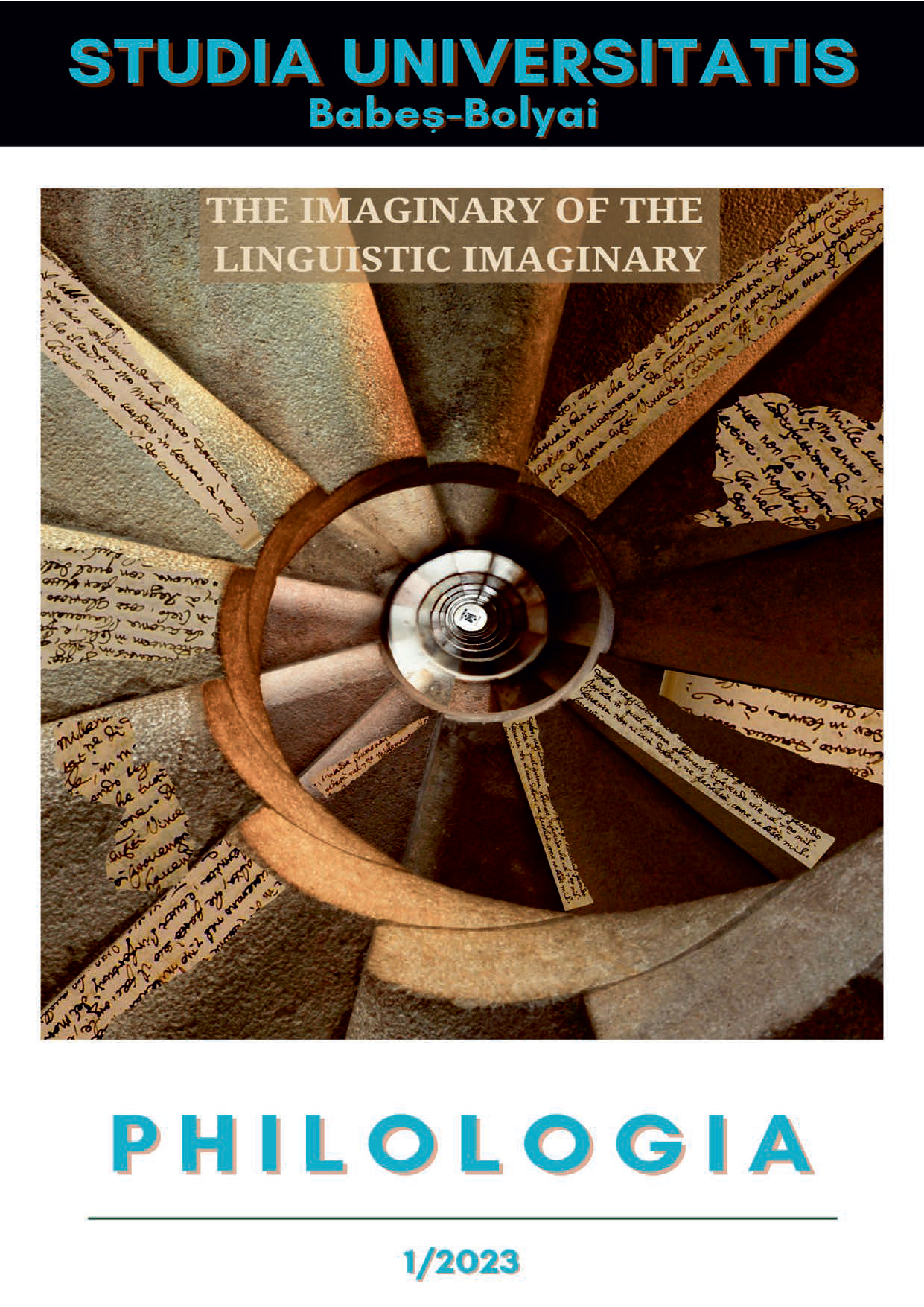METAFORE DEL CIBO – UNA FORMA DI EREDITÀ CULTURALE E INNOVAZIONE LINGUISTICA. UN PARAGONE TRA METAFORE DEL CIBO IN ROMENO, INGLESE E ITALIANO
DOI:
https://doi.org/10.24193/subbphilo.2023.1.07Keywords:
food metaphors, cognitive framework, cognitive theory, Italian, Romanian, EnglishAbstract
Food Metaphors – A Form of Cultural Heritage and Linguistic Innovation. A Comparison between Romanian, English, and Italian Food Metaphors. Food is the centre of our world, both as a vital resource, and as a social, religious, and aesthetical experience. The cognitive theory of metaphor focuses on the capacity of food metaphors to convey representations of the world specific to individual languages. The aim of our research is to compare food metaphors in Romanian, Italian, and English. The cognitive frameworks taken into consideration reveal common representations of physical and moral human features that Italian, English and Romanian speakers associate with food metaphors. In this manner, food metaphors act as a cultural matrix encoding beliefs and stereotypes about us, about what we perceive as success and/or failure. Also, the food metaphors have a strongly motivated character, as the traits of food are similar to the physical and moral traits of human beings. Nevertheless, the comparison of the three languages reveals differences in the foods that are considered central, vital to each gastronomic community and in the traits that are valued or disregarded. Another subchapter of our research analyses food metaphors in argot, albeit its fast transformation due to its functioning as a secret language.
Metaforele alimentare – o formă de moștenire culturală și de inovație lingvistică. O comparație a metaforelor alimentare în limbile română, engleză și italiană. Mâncarea se regăsește în centrul vieții noastre, atât ca resursă vitală, cât și ca practică socială, religioasă ori estetică. Teoria metaforei conceptuale vizează potențialul metaforelor alimentare de a transmite reprezentări individuale ale lumii, în funcție de fiecare limbă. Scopul prezentei cercetări este de a compara metafore alimentare în limbile română, italiană și engleză. Schemele conceptuale analizate dezvăluie reprezentări comune ale trăsăturilor fizice și morale pe care vorbitorii italieni, români și englezi le asociază cu metaforele alimentare. Astfel, metaforele alimentare funcționează ca o matrice culturală care însumează credințe și stereotipii despre noi și despre ceea ce considerăm drept succes și/sau eșec. De asemenea, metaforele alimentare au un caracter profund motivat, deoarece trăsăturile alimentelor sunt similare trăsăturilor umane fizice și morale. Cu toate acestea, comparația în cele trei limbi relevă diferențe în ceea ce privește alimentele considerate centrale, esențiale pentru fiecare comunitate gastronomică, precum și în privința trăsăturilor care sunt valorizate sau disprețuite.
Cuvinte-cheie: metafore alimentare, schemă conceptuală, teoria metaforei conceptuale, limba română, limba italiană, limba engleză
Article history: Received 6 December 2022; Revised 5 February 2023; Accepted 27 February 2023; Available online 27 March 2023; Available print 31 March 2023.
References
Chelaru-Murăruș, Oana. 2017. Metafore alimentare în limbajele orale: de la figura semantică la figura conceptuală, in Limbaje sectoriale, texte și context, București: Editura Universității din București.
Gheltofan, Daniela. 2016. Food for Thought–Thought for Food: A Romanian-Russian Corpus of Metaphors Based on Culinary Terms, in Loredana Pungă (ed.), Language in Use: Metaphors in Non-Literary Contexts. Newcastle: Cambridge Scholars Publishing.
Ionescu, Daniela Corina. 2017. Food Idioms and Proverbs in English and Romanian – A cross-linguistic and cross-cultural approach, Bucarest: Oscar Print Publishing Company.
Ionescu, Daniela Corina. 2020. A Contrastive Analysis of Food Idioms: Linguistic and Cultural Perspectives, in Biljana Čubrović (ed.), BELLS90 Proceedings: International Conference to Mark the 90th Anniversary of the English Department, Faculty of Philology, University of Belgrade, Vol. 1: 87–107, https://doi.org/10.18485/bells90.2020.1.ch5.
Lakoff, George. 2014. Mapping the brain’s metaphor circuitry: metaphorical thought in everyday reason, in Frontiers in Neurosciences, Vol. 8, art. 958: 1-14.
Lakoff, George, Mark Johnson. 1980. Metaphors we Live by. Chicago: The University of Chicago Press.
Pungă, Loredana. 2016. Anthropomorphic Metaphors in Winespeak: A Conceptual and ContextBased Analysis, Loredana Pungă (ed.), Language in Use: Metaphors in Non-Literary Contexts, Cambridge Scholars Publishing, Newcastle.
Quartu, Monica, Elena Rossi. 2012. Dizionario dei modi di dire della lingua italiana. Milano: Hoepli, disponibile a dizionari.corriere.it/dizionario-modi-di-dire.
Sharifian, Farzad. 2011. Cultural Conceptualisations and Language. Theoretical Framework and Applications. Amsterdam: John Benjamins Publishing Company.
SITOGRAFIA
Downloads
Published
How to Cite
Issue
Section
License
Copyright (c) 2023 Studia Universitatis Babeș-Bolyai Philologia

This work is licensed under a Creative Commons Attribution-NonCommercial-NoDerivatives 4.0 International License.





 ©Studia Universitatis Babeş-Bolyai Philologia. Published by Babeș-Bolyai University.
©Studia Universitatis Babeş-Bolyai Philologia. Published by Babeș-Bolyai University.